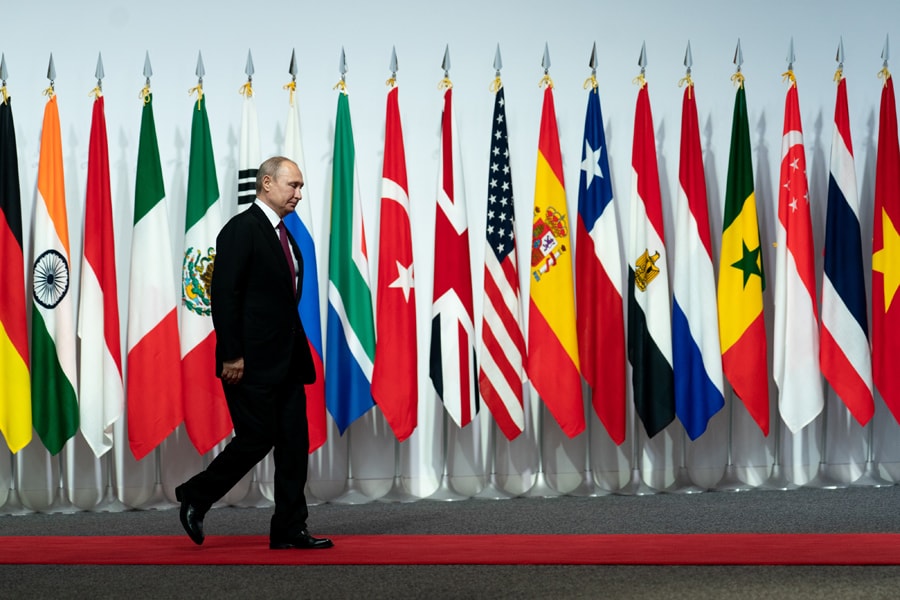
Putin's next move on Ukraine is a mystery. Just the way he likes it
Putin's brinkmanship of recent months is a case study in his ability to use tension and unpredictability to seek high returns with what may seem like a weak geopolitical hand
 President Vladimir Putin of Russia during the G-20 summit in Osaka, Japan on Friday, June 28, 2019. The contradictory, sometimes menacing messages from the Kremlin are indicative of the Russian leader’s desire to keep his rivals on edge. (Erin Schaff/The New York Times)
President Vladimir Putin of Russia during the G-20 summit in Osaka, Japan on Friday, June 28, 2019. The contradictory, sometimes menacing messages from the Kremlin are indicative of the Russian leader’s desire to keep his rivals on edge. (Erin Schaff/The New York Times)
GENEVA — President Vladimir Putin of Russia has spent months massing close to 100,000 troops near the Ukraine border. But Moscow says it has no intention of invading.
What is Russia’s next move? No one knows, except perhaps Putin. And that is by design.
The mystery surrounding the Russian leader’s intentions was thick as fog again this week, after a top Russian diplomat delivered a series of seemingly contradictory messages upon emerging from two days of high-stakes security talks with the United States.
Moments after declaring the talks “deep’’ and “concrete,’’ Deputy Foreign Minister Sergei Ryabkov warned that failure to meet Russia’s demands could put the “security of the whole European continent” at risk.
The gyrating, often ominous positions helped stump even some of those who make a living from decoding Putin’s intentions.
©2019 New York Times News Service







